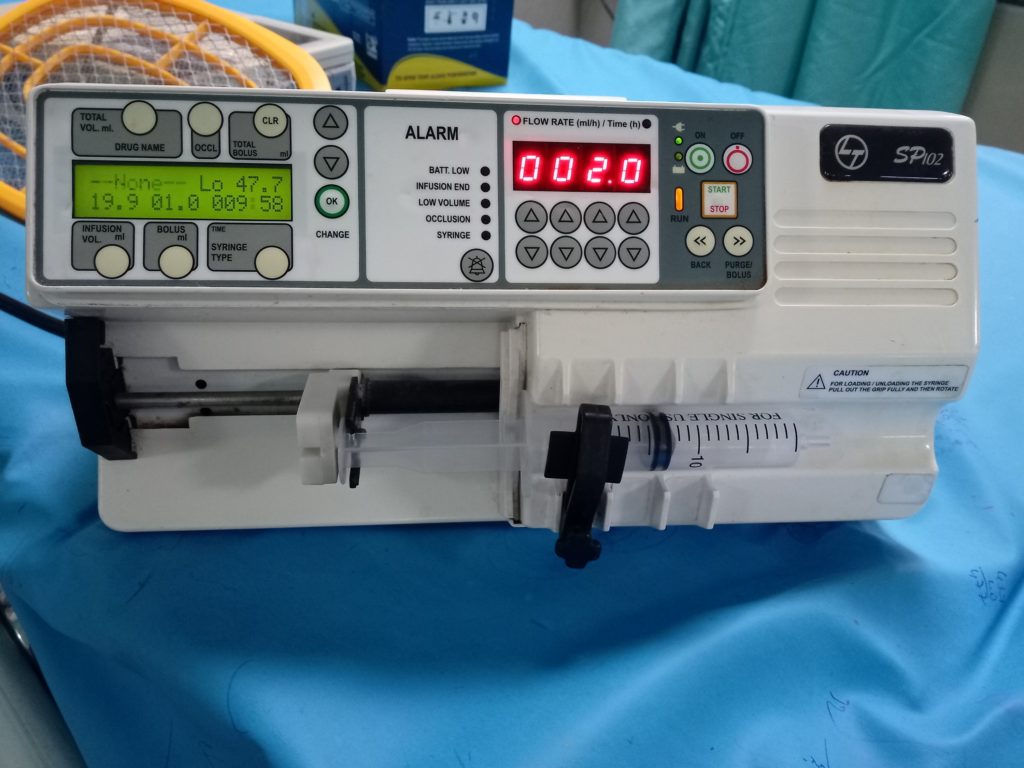An infusion pump is a medical device that delivers fluids, medication, or nutrients to a patient’s bloodstream in a controlled and precise manner. These pumps are commonly used in hospitals, clinics, and other healthcare settings to administer intravenous (IV) therapy, including chemotherapy, antibiotics, and pain medication.
Infusion pumps work by using a motorized mechanism to push fluids through an IV catheter and into the patient’s bloodstream. The pump can be programmed to deliver fluids at a specific rate and volume, which can be adjusted as needed based on the patient’s condition and response to therapy.
Types of infusion pump
There are several types of infusion pumps available, including volumetric pumps, syringe pumps, and patient-controlled analgesia (PCA) pump. Volumetric pumps are the most commonly used type of infusion pump and can deliver fluids in precise volumes over a set time period. Syringe pumps are used for more precise and controlled administration of small volumes of medication, such as in neonatal and pediatric care. PCA pumps are used for pain management and allow patients to self-administer medication within prescribed limits.
Infusion pumps offer several advantages over manual IV therapy, including increased precision and accuracy in fluid delivery, reduced risk of medication errors, and improved patient safety and comfort. These pumps also allow healthcare providers to monitor the patient’s response to therapy in real time and make adjustments as needed to ensure optimal outcomes.
However, infusion pumps are not without their limitations and risks. Improper use or malfunction of an infusion pump can lead to serious complications, including fluid overload, air embolism, infection, and medication overdose. It’s important for healthcare providers to receive proper training on the use of infusion pumps and to follow established protocols and guidelines to ensure safe and effective use.
In summary, infusion pumps are essential medical devices used in a variety of healthcare settings to deliver fluids and medication to patients in a controlled and precise manner. These pumps offer numerous advantages over manual IV therapy, but also carry risks and limitations that must be carefully managed by trained healthcare professionals.
The principle behind infusion pump
The principle behind an infusion pump is to deliver a precise and controlled amount of fluid, medication, or nutrients to a patient’s body over a specified period of time. The pump works by using a motor to push or pull a syringe or IV bag, which contains the fluid or medication, at a consistent and controlled rate.
This equipment is typically programmed by a healthcare professional to deliver a specific dose or infusion rate based on the patient’s medical condition and treatment plan. The pump can be set to deliver the medication or fluid continuously or in specific intervals, depending on the needs of the patient.
Infusion pumps are designed to be highly accurate and reliable, with safety features that help prevent over- or under-infusion. For example, some pumps have sensors that can detect air bubbles in the tubing, which can be a serious safety concern if they enter the patient’s bloodstream. The pump may also have an alarm system that alerts the healthcare provider if the infusion rate deviates from the programmed settings or if the medication or fluid is about to run out.
Infusion pump application
Infusion pumps are commonly used in a variety of medical settings, including hospitals, clinics, and home healthcare settings. They are used to deliver a range of medications, such as chemotherapy drugs, pain medications, and antibiotics, as well as fluids and nutrients for patients who are unable to eat or drink on their own.
Overall, the principle behind an infusion pump is to provide precise and controlled delivery of fluids and medications to patients, helping to ensure safe and effective treatment.
